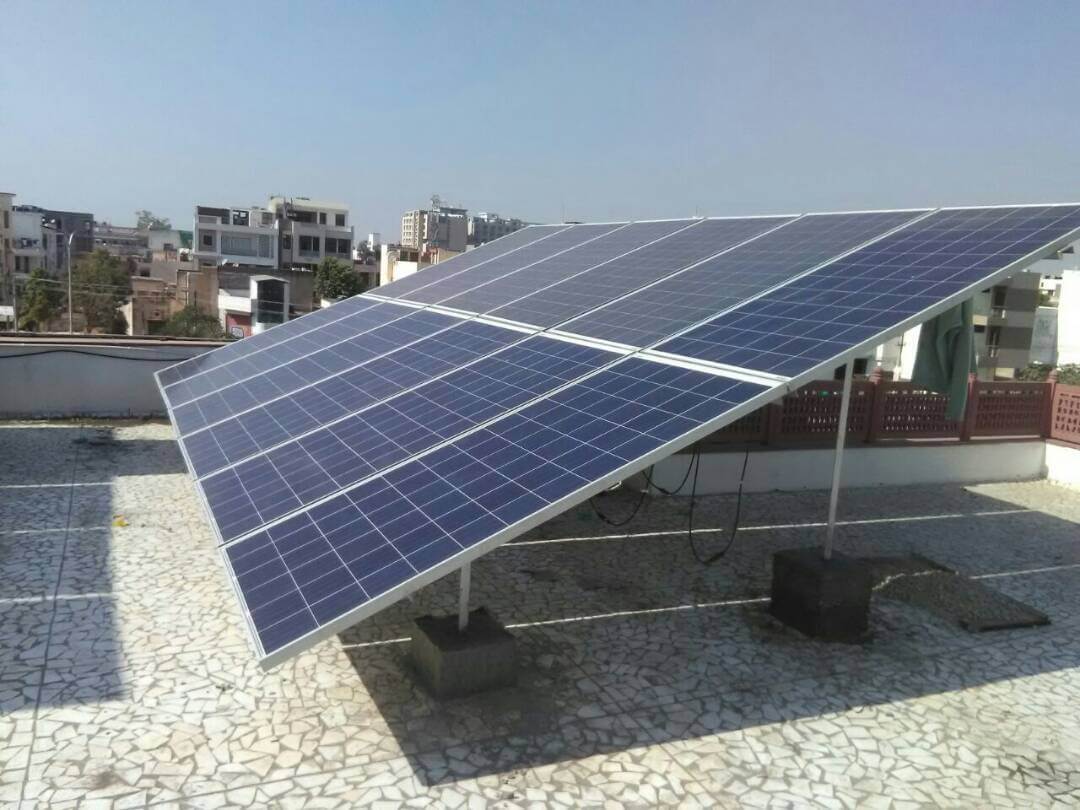Anaga
Solar Roof Top

What’s Included
Solar Roof Top
A solar PV rooftop system is essentially a small power plant that is installed on your roof. Three essential components make up the Grid Interactive Roof Top Solar Photo Voltaic (PV) system. . Solar PV modules are arranged in an array, which requires a mounting structure to keep the modules at the proper angle for a maximum generation. Solar panels convert solar energy in the form of light into direct current (DC) power (Direct Current). The inverter/power conditioning equipment converts DC electrical energy to AC (Alternate Current) electricity, which is then connected to the power grid via an AC distribution board.
What to Expect
- Rooftop solar panels rely on the solar cells’ capacity to capture the sun’s energy and convert it to power.
- It is made of a tiny, square-shaped semiconductor that is produced from conductive materials such as silicon.
- When sunlight reaches the solar cells, chemical processes occur, releasing electrons and resulting in the generation of electric current.
- Solar PV systems that operate on the grid do not require batteries for storage. Different types of inverter technology can be used to suit your needs and convenience.
- Increased earning potential:With a net metre installed in your home, you can trace the number of units you send to the power grid and claim a credit on your home electricity bill. This is a profitable choice for consumers who see it as an additional source of income.
- Profitable investment:An on-grid solar system is a profitable investment.
Solar On-Grid System
With an On-grid solar system, you can export excess power generated at your home, to the grid on a sunny day and import power for your home’s needs from the grid on a cloudy day when you have a short supply of power. In this battery-less system, solar generation is first used to meet the demand of the existing loads, and any excess generation is exported to the grid. If there is a short supply or no solar generation, then the required energy is imported from the grid. These systems do not require batteries and are powered by the electrical grid.
Solar Off-Grid System
An off-grid solar system is best suited for remote areas with poor or no access to any type of grid. Electrically, off-grid means that there is no connection to the main power supply. You are off-grid if you are not connected to your grid’s power system or utility provider in any way. This is appealing since you can completely self-sustain your energy consumption. However, off-grid systems necessitate the purchase of a backup battery, which can be costly, heavy, and unfriendly to the environment, defeating the aim of choosing solar (to save money and live greener). It is the most popular sort of solar power backup system.
Solar Hybrid PV System
A hybrid solar system combines the best of the grid-tied solar system and the off-grid system. The hybrid solar energy system integrates on-grid and off-grid solar energy systems into one system. In simple terms, it’s a solar power system that’s connected to the power grid and also has a battery backup. It has the advantage of storing energy in the battery when the solar panel is at its most efficient and retrieving it during peak nighttime hours when electricity rates are high or in the event of a grid failure. In addition, one can sell excess energy created to the power grid and be compensated for it.
